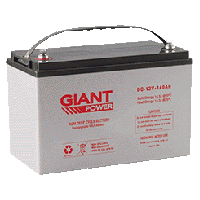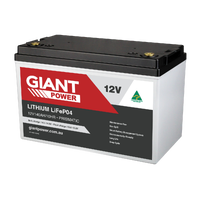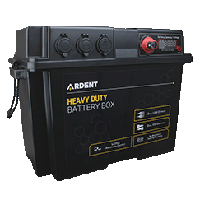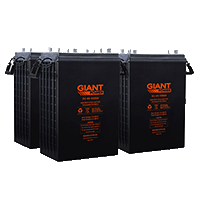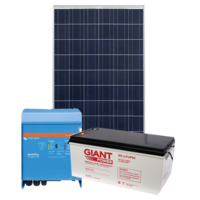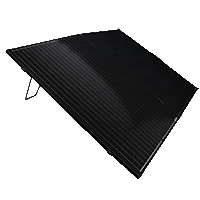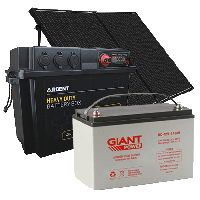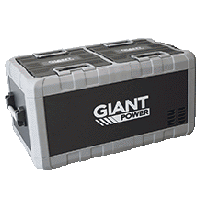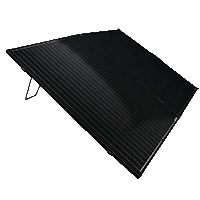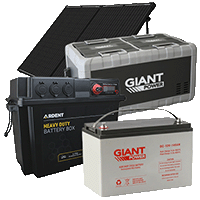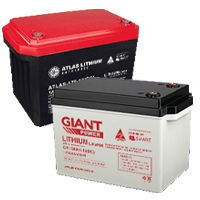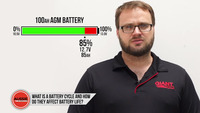How Do Solar Batteries Store Energy?
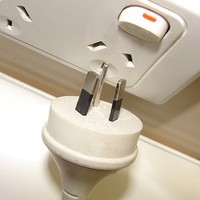
Solar panels may seem like the most important component in your solar system but batteries are just as crucial. Without them, the energy captured by the solar panels could not be stored for use at night or during periods of bad weather. Many solar systems rely on 12V deep cycle batteries to perform this job. The batteries’ high cyclic life makes them the preferred solar battery for small portable panels and certain stand alone solar systems.
Understanding the process behind solar energy storage helps you to get the best out of your solar system and deep cycle batteries. Read on to find out more about how solar batteries store energy.
Why do we need to store solar energy?
Due to the variable nature of the sun, capturing and storing energy is crucial if you plan to use renewable energy as your primary power source or even just to power electronic equipment when camping. Storing the energy captured by solar panels gives you access to power at night or during periods of bad weather, as well as the peace of mind knowing that you’ll never be left stranded without electricity.
Storing solar or wind energy on a large scale is problematic due to the size and cost of the batteries needed. However for small stand alone solar systems and off grid setups used to power the average home, energy can be easily stored with the use of a single deep cycle battery or off grid battery bank.
How do solar batteries work?
When light is absorbed by solar panels and transferred to electrons inside the semiconductor, the electrons begin to flow in a certain direction. This movement is what generates electricity. Find out more about how solar panels produce energy.
The semiconductors attached to the solar panel are then attached to the cells of the deep cycle battery. As light hits the solar panel, a percentage of its energy is absorbed by the panel and transferred to the semiconductor. The semiconductor then sends this energy to the battery’s cells for storage. If a device is attached to the solar panel, rather than a solar battery, the energy is transferred to it and powers the device for immediate use.
Batteries lose charge when residual particles from the chemical reaction gather on the battery’s cells. This slows the production of electrons but with electricity produced by the solar panel, a current is produced that draws protons to the battery’s cell by attracting them with electrons.
What type of battery do I need for my solar system?
Solar batteries function differently to other types of portable power sources. While car batteries put out a short burst of current, the 12V deep cycle battery gives off a much smaller current over a longer period of time. This long draw, combined with deep cycle batteries’ high cyclic life makes them ideal for use with solar systems. The batteries can also be frequently charged and discharged and require very little maintenance, features that enable their use in larger off grid battery banks.
They won’t require topping up with water either and an absorbed glass mat design that seals in electrolyte also eliminates the risk of acid leakage.
When choosing a deep cycle battery for your solar system, it’s crucial to get the sizing right. Overcharging or discharging causes damage to the battery and can shorten its lifespan. First decide how much storage your battery bank will need to provide. Depending on whether your panels are powering your home or a portable setup used for camping, the number of days you will have to provide power without solar input will vary. Home solar systems should have enough energy storage capacity to last for three days of bad weather.
The power needs of your devices must be less than the total storage of your batteries but if you are embarking on a longer trip or powering your home, it is best to choose a battery that is higher than your daily power usage. You won’t need to worry about being left without power, even if you encounter cloudy weather.
Looking after your solar battery
Correct maintenance and charging procedures are key for optimising your solar battery’s lifespan and limiting internal damage. This allows you to store solar power efficiently and gives you peace of mind that you won’t be left without power due to a failed battery.
Most damage is caused to deep cycle batteries due to incorrect charging methods. It’s important never to store your battery in a discharged state as this can cause the sulphuric acid to form a lead sulphate on the negative plates, also known as sulfation. Overcharging can also damage the internal structure of your battery. If you can, invest in a 240V ‘smart’ battery charger. Smart chargers are able to detect the type of battery being charged by sending a pulse into the battery to determine its internal resistance. It is able to decipher the voltage that best suits the battery and will stop when full charge has been reached. Find out more about deep cycle battery maintenance.
Remember, the Aussie Batteries & Solar experts are always on hand to give reliable battery advice and you can also browse our range of deep cycle batteries.
July 28, 2014 | By Aussie Batteries | Comments

